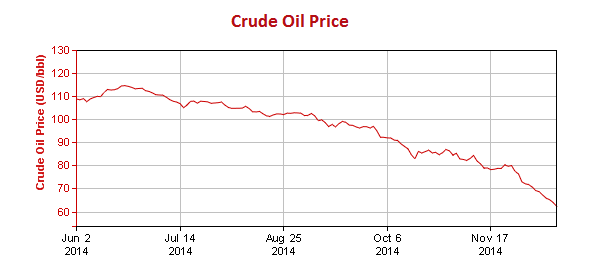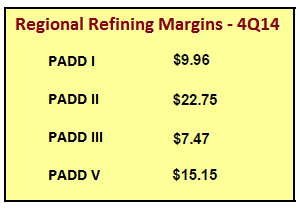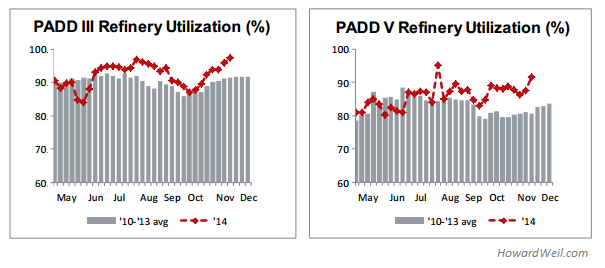RL Blogs

By Ralph Laurel
Dec 13, 2014Discussing whether refiners should consider reducing utilization in a falling crude market. |
||||||||||
| Similar to the crude market plunge in 2005, refineries this year had the ability to respond to falling crude prices. Since the decline continued over a period of several months, every refinery had the option to reduce utilization, especially with year-end LIFO implications looming for North American refiners.
So let’s do the math. If refining margins are less than $10 /bbl in the East Coast (PADD I) and the Gulf Coast (PADD III), and there is market backwardation of $10 /bbl for 4 months in a row, that means refineries are losing money in those regions during the 4th quarter of 2014. This is particularly true because of two additional factors:
Given the discussion points above, why did very few refineries pro-actively cut utilization over the past several months? Companies certainly do not like losing money!
I refuse to accept the notion that markets are volatile because even the most unsophisticated refiner could have guessed that demands decline and inventories bloat during the winter. Instead, I suggest that most refineries maintained utilization for 3 primary reasons:
1. Refinery optimization groups don't account for market structure
Majority of the refineries in the world use Linear Programs (LPs) to determine economic drivers and run plans. While LPs are the best guiding tool to use, the issue is that many of the inputs are designed for steady state operations.
Refinery linear program runs utilize a variety of inputs, ranging from price forecast, demand forecast, refinery constraints, to seasonal product specifications. Since LP users rely on efficient collection of all the inputs in order to properly set up LP cases, there is seldom any time to account for abnormal condition changes.
Refinery LP users know how to account for refinery margin shifts when crack spreads change; however, when crack spreads remain constant, but crude market structure shifts, LPs are not set up to manage.
2. Refinery organizations are inexperienced
Most companies continue to manage shifting workforce demographic challenges. With boomers continuing to retire, many companies have accelerated career development for the remaining workforce to manage succession planning.
This has created inexperience in all levels of the refining organization for most companies. The result is that most people do not even understand what is currently happening.
The market crash of 2008 was only 6 years ago, but I can assure you that most refining companies have changed over 75% of their refinery planning and supply chain personnel during that time.
3. Refinery Management teams focus on the wrong metrics
While I fully support the use of leading and lagging metrics to steward a business, I often take issue with companies that do not establish some sort of flexibility in their metrics.
Ok - you can maintain diehard metrics around Safety, Environment, and Health performance, but for the sake of holy-friggin common sense, DO NOT establish hard metrics around Refinery Utilization! Too often do I see refinery managers get caught up on the literal aspect of a metric and lose sight of the objective. We are here to make money, not adhere to metrics!!
With year-end bonuses for most refinery managers tied directly to utilization, we incentivize stupid behavior.
It’s likely that many refineries are currently scrambling around trying to figure out how to place their excess production into the market. If you earned your lesson from 2008 you could have avoided this situation. Now you will just have to answer to your board of directors on why you are hemorrhaging cash during this volatile period. | ||||||||||
|
|











